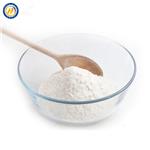Oestradiol 17-Heptanoate: Contraceptive/Gender-Affirming Use & Wastewater Removal
Nov 27,2025
Oestradiol 17-heptanoate is a long-acting injectable estrogen used in gender-affirming hormone therapy, primarily for transgender women and individuals assigned male at birth who are seeking feminization. As a prodrug of estradiol, this formulation allows for sustained hormone levels through intramuscular administration, offering convenience and consistent therapeutic outcomes. Oestradiol 17-heptanoate is a synthetic estrogen ester that gradually releases estradiol into the bloodstream after intramuscular injection. By extending the duration of action, it reduces the frequency of injections while delivering stable hormone levels. It is not available in all countries (e.g., the UK) and requires a prescription from a healthcare provider.

Electrochemical Removal of Oestradiol 17-heptanoate in Real Industrial Wastewater
Contaminants removal from industrial effluent is a major environmental concern. In this context, Algestone Acetophenide and Oestradiol 17-heptanoate are synthetic sex hormones widely used in the manufacture of contraceptives, whose presence in waterbodies may lead to environmental hazard. Given that so far, the methods employed in the removal of these drugs have presented limited efficiency or high implementation costs, the present work presented an electrochemical reactor composed by 32 carbon steel electrodes (1728 cm2), which was employed in a real scale model to remove these synthetic hormones in an industrial pharmaceutical effluent. After 60 minutes the removal efficiency of the hormones Algestone Acetophenide and Oestradiol 17-heptanoate, with low energy consumption (< 0.742 kWh.m-3). Physicochemical parameters such as color, turbidity, Biochemical Oxygen Demand (BOD) and Chemical Oxygen Demand (COD) also showed good removal efficiency too (> 50%), which implicates that the method herein depicted may be a valuable alternative to promote the removal of these contaminants in industrial wastewater.[1]
From the physicochemical point of view, these results show that the industrial prototype marketed by Aqua ETE is very promising in the removal of synthetic hormones from industrial effluent. This fact could be supported by mass spectrometry analysis of Algestone Acetophenide and Oestradiol 17-heptanoate degradation, where were obtained good efficiency, 88.9% and 91.8% respectively, being crude effluent and treated effluent. In this work, the real scale electrochemical removal of two synthetic sex hormones was conducted. After 60 minutes of EC, 88.9% of Algestone Acetophenide, 91.8% of Oestradiol 17-heptanoate, 68.9% of color, 71.8% of BOD, 52.3% of COD and 99.1% of turbidity of the pharmaceutical effluent were removed. In this sense, EC on an industrial scale is an effective, cheap treatment process and may be applicable in the degradation of other compounds. Nonetheless, this is the first study of the removal of synthetic hormones on industrial scale and the protocol herein used may provide a basis to further investigations.
Injectable contraceptive containing Oestradiol 17-heptanoate
Perlutan®, a combination of dihydroxyprogesterone acetophenide (DHPA) 150 mg and Oestradiol 17-heptanoate (E2EN) 10 mg, is an injectable contraceptive for once-a-month intramuscular use. The monthly injection promotes withdrawal bleeding at the end of 3 weeks, in a pattern similar to menstruation, which is appealing to women who prefer to retain cyclic bleeding as evidence of contraceptive efficacy. More than 1 million women regularly use injectable contraception in Latin America. During the last 10 years, the popularity of Perlutan containing Oestradiol 17-heptanoate has increased because of its efficacy and practicality. Six million units are administered annually in Brazil alone. The product insert recommends that the first injection be given between Days 7 and 10 of a menstrual cycle, with subsequent injections 7–10 days after Day 1 of withdrawal bleeding. This schedule may result in an irregularity in the frequency of injections, and some users prefer to receive one injection every 30 days irrespective of withdrawal bleeding. A clinical trial in which the new monthly schedule was compared with the traditional and currently used regimen was carried out to evaluate the efficacy and acceptability of this alternative. The study was conducted on adolescents, a segment of users that has grown rapidly in recent years.[2]
References
[1] Ruiter Lima Morais . (2019). Electrochemical Removal of Algestone Acetophenide and Estradiol Enanthate in Real Industrial Wastewater. International Journal of Electrochemical Science, 14 6, Pages 5856-5867.
[2] Elsimar M. Coutinho . (2006). Comparison of two regimens of a monthly injectable contraceptive containing dihydroxyprogesterone acetophenide and estradiol enanthate. Contraception, 73 3, Pages 249-252.
- Related articles
- Related Qustion
3,3',4,4'-Biphenyltetracarboxylic dianhydride imparts high temperature resistance/mechanical strength for aerospace and electronic applications.....
Nov 27,2025Chemical MaterialsSodium molybdate dihydrate is used in agriculture/industry/food, promotes oyster shell growth, and shows low acute toxicity in accidental ingestion.....
Nov 27,2025Chemical MaterialsOestradiol 17-heptanoate
4956-37-0You may like
Oestradiol 17-heptanoate manufacturers
- Oestradiol 17-heptanoate
-

- $1.00 / 1g
- 2025-11-27
- CAS:4956-37-0
- Min. Order: 1g
- Purity: 99%
- Supply Ability: 1000kg
- Oestradiol 17-heptanoate / Estradiol enantate
-

- $0.00 / 1KG
- 2025-11-27
- CAS:4956-37-0
- Min. Order: 1KG
- Purity: 99%
- Supply Ability: 500
- Oestradiol 17-heptanoate
-

- $5.00/ KG
- 2025-11-27
- CAS:4956-37-0
- Min. Order: 1KG
- Purity: 99% hplc
- Supply Ability: 500TONS






